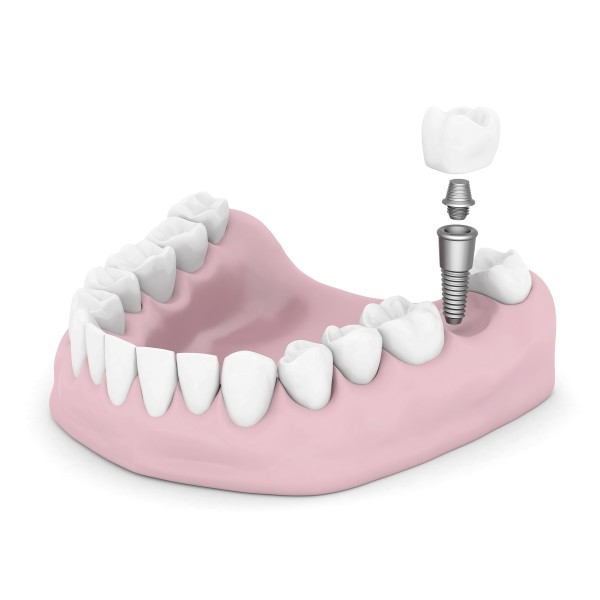
There are numerous technologies and methods for dealing with tooth loss. However, none are as advanced as dental implants. While dentures and bridges address the fundamental problem, which is a missing tooth, they do nothing to brace the tooth or to address the root of the problem. This means that these solutions have to be adhered to the surface of the mouth somehow, typically with wires or dental cement. On the other hand, dental implants focus their attention on the root. In fact, a dental implant is a tiny titanium screw that is placed into the jawbone, taking the place of a natural tooth’s root. This provides a strong and stable platform under the gum line, which then allows us to place a dental crown, or tooth, on top of the abutment.
Getting dental implants is a lot simpler than it used to be a few years ago. Simultaneously, science continues to dispel some of the popular myths that surround dental implants. For the longest time people have been looking at dental implants, and elsewhere around the country, as a purely aesthetic endeavor. This is an understandable misconception. When you get a dental implant, you are going to be getting a perfect tooth that is almost an identical replica of your original one. There are no wires holding it in place, so all you have is a new tooth. In fact, we can give you a tooth, or teeth, that look far better than your original ones. Naturally this perfection has led to the idea that all we care about is the aesthetics. Nothing could be further from the truth, and science is starting to show this. We know, for example, that when you use a dental implant to replace a lost tooth, the implants acts like a naturally occurring root. It creates a symbiotic relationship with the jawbone, which in turn allows the jawbone to receive stimulation from the prosthetic. This helps the jaw to avoid resorption and also keeps the facial structure from a potential collapse.
There are already 3 million people across the nation that have gotten dental implants. What we know is that the rate of dental implants is increasing annually, but that there are a lot of people still using antiquated technology. In our dentist office, we encourage every one of the 15 million Americans that are using bridges or dentures to consider switching to get the best looking, most effective, longest lasting tooth replacement available today.
Related Posts
Dental Implants to Replace Missing Teeth
Dental implants are becoming one of the most popular options for patients who need to replace one or multiple teeth. Our smile is usually the first feature someone notices about us. We …
Tooth Replacement: Dentures or Dental Implants?
Dentures and dental implants are two of the most common methods of single tooth replacement. Both are effective, but one might be preferable to the other, depending on the specifics of the …
Reasons to Choose Dental Implants to Replace Missing Teeth
Dental implants are artificial teeth roots that can be used to replace missing teeth. A tooth can be knocked out by trauma to the face, or it might fall out due to bone …
Dental Ridge Preservation: Dental Implants
Dental ridge preservation is a way to preserve the socket after a missing tooth develops. Dental implants require adequate bone support, and bone loss can occur after losing a tooth if …


